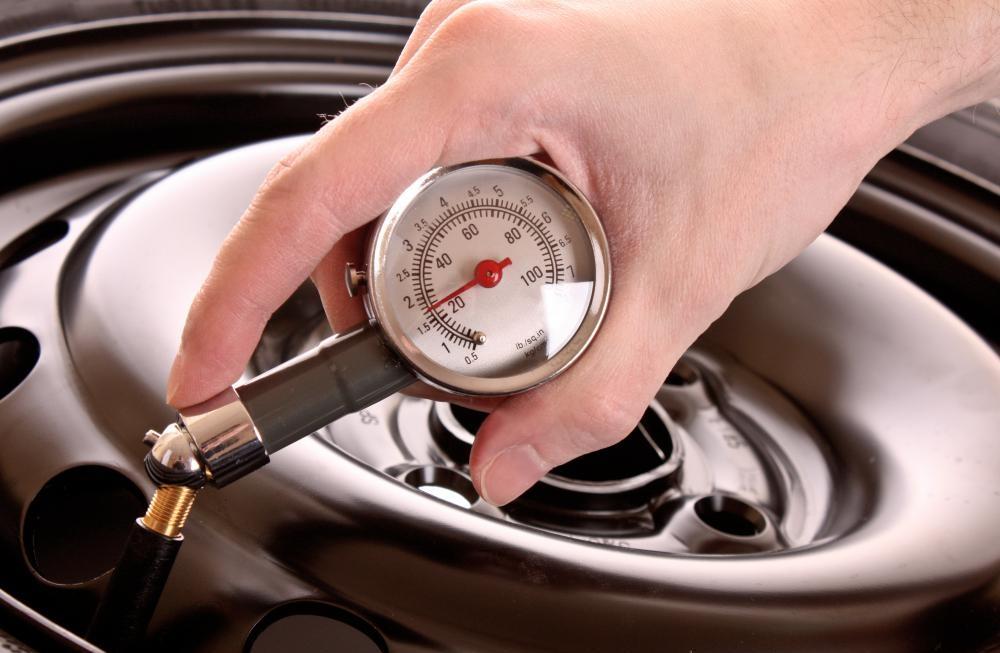To calibrate a tire pressure gauge, press the gauge onto a reliable source of pressure. Then, adjust the gauge’s needle to the recommended pressure level.
Maintaining proper tire pressure is crucial for optimum vehicle performance and safety. Incorrect tire pressure can lead to decreased fuel efficiency, uneven tire wear, and potential blowouts. To ensure accurate readings, it is important to calibrate your tire pressure gauge regularly.
We will guide you through the simple steps to calibrate your gauge effectively. By following these instructions, you can maintain accurate tire pressure readings, resulting in a safer and more efficient driving experience.

Credit: carfromjapan.com
Choosing The Right Tire Pressure Gauge
When calibrating your tire pressure gauge, the first step is selecting the right type of gauge for your needs.
Digital Vs. Analog
Digital tire pressure gauges offer precise readings, while analog gauges are easy to read at a glance.
Accuracy And Precision
It’s crucial to choose a gauge that provides accurate and precise measurements for optimal tire inflation.
Understanding The Calibration Process
To calibrate a tire pressure gauge, start by verifying its accuracy against a calibrated gauge. If there’s a variance, adjust the gauge as per the manufacturer’s instructions to ensure precise readings. Once calibrated, periodically check and recalibrate the gauge to maintain accuracy and extend its lifespan.
Understanding the Calibration Process Calibrating your tire pressure gauge is an essential step to ensure accurate readings and maintain the performance of your gauge. Understanding the calibration process is important as it not only helps you keep your gauge in top shape but also ensures reliable and consistent tire pressure readings. In this section, we will delve into why calibration is important and the factors that can affect the accuracy of your gauge.Why Calibration Is Important
Calibration is important because it allows you to trust the readings of your tire pressure gauge. Over time, gauges can become less accurate due to various factors such as wear and tear, exposure to extreme temperatures, or even mishandling. By calibrating your gauge, you can verify its accuracy and make any necessary adjustments, allowing you to rely on the readings it provides.Factors Affecting Gauge Accuracy
There are several factors that can affect the accuracy of your tire pressure gauge. It is important to be aware of these factors to understand why calibration is crucial. Let’s take a closer look at some of these factors: 1. Temperature: Temperature variations can impact the accuracy of your gauge. Extreme cold or heat can cause the internal mechanisms of the gauge to expand or contract, resulting in inaccurate readings. Calibrating your gauge compensates for these temperature changes, ensuring precise measurements. 2. Exposure to Dust and Debris: Accumulation of dust and debris on the gauge’s components can affect its performance. It is essential to regularly clean and maintain your gauge to prevent any debris from interfering with the accuracy of the readings. Calibration helps identify and rectify any issues caused by debris buildup. 3. Regular Usage: The more you use your gauge, the more wear and tear it experiences. Over time, this can lead to decreased accuracy. Calibrating your gauge at regular intervals helps identify and correct any deviations, ensuring consistency in readings. 4. Handling and Storage: Mishandling or improper storage can lead to damage to the gauge’s delicate components, affecting its accuracy. Calibration allows you to confirm the gauge’s performance and correct any issues caused by mishandling or improper storage practices. Remember, calibration is not a one-time process but an ongoing routine that should be performed to maintain accuracy. By understanding why calibration is important and the factors that can affect gauge accuracy, you can ensure your tire pressure gauge remains reliable and provides accurate readings when you need them. In the next section, we will dive into the step-by-step process of calibrating your tire pressure gauge, providing you with a clear guide to follow.Step-by-step Calibration Guide
Calibrating a tire pressure gauge is an essential task to ensure accurate readings and maintain your vehicle’s optimal performance. By following this step-by-step guide, you can easily calibrate your tire pressure gauge yourself. Let’s get started!
Gather Necessary Tools
Before you begin calibrating your tire pressure gauge, make sure you have the following tools at hand:
| Tools | Description |
|---|---|
| Calibrated Pressure Source | A reliable and accurate pressure source, like a standalone gauge or an air compressor with a built-in gauge. |
| Adjustment Tool | A small screwdriver or Allen wrench to modify the calibration settings on your tire pressure gauge. |
| Tape Measure | To measure the distance from the center of the valve stem to the outermost edge of the tire. |
Calibrating The Gauge
- Begin by ensuring that your tire pressure gauge is clean and free from any debris or obstructions.
- Connect your calibrated pressure source to the tire pressure gauge. Ensure a secure connection by firmly attaching it to the valve stem.
- Refer to your pressure source’s instructions to determine the desired pressure. Let’s assume it is 30 PSI for this example.
- Compare the reading on the tire pressure gauge with the desired pressure. If there is a discrepancy, proceed to the next step.
- Using the adjustment tool, carefully modify the calibration settings on your tire pressure gauge. Turn the screw or adjust the setting according to the manufacturer’s instructions.
- Recheck the reading on the tire pressure gauge after making the adjustments. Repeat this step until the gauge consistently displays the desired pressure.
- Once the gauge is calibrated, detach it from the pressure source and store it in a safe place.
- Verify the accuracy of your newly calibrated tire pressure gauge by using it to check the pressure of other tires. Compare the readings with those from a reliable gauge to confirm the accuracy.
Congratulations! You have successfully calibrated your tire pressure gauge. Regularly calibrating your gauge will ensure accurate readings, leading to improved fuel efficiency, tire longevity, and overall vehicle safety.
Verifying The Calibration
Testing The Gauge
1. Inflate a tire to a recommended pressure using a verified air pressure source.
2. Check the tire pressure with the gauge and record the reading.
3. Compare the gauge reading to the actual pressure using a calibrated reference gauge.
4. Note any discrepancies and adjust the tire pressure accordingly.
Repeat Verification For Confidence
1. Test the gauge on multiple tires of various pressures to ensure consistent accuracy.
2. Compare the gauge readings with a known accurate reference gauge for each test.
3. Make any necessary adjustments to the tire pressure gauge for optimal performance.
Maintaining Gauge Accuracy
Maintaining gauge accuracy is crucial for ensuring the reliability of your tire pressure gauge. By keeping your gauge properly calibrated, you can trust the readings it provides, ultimately ensuring the safety and performance of your vehicle.
Storage And Handling
Proper storage and handling of your tire pressure gauge play a pivotal role in maintaining its accuracy. Avoid exposing the gauge to extreme temperatures or direct sunlight. Store it in a protective case to prevent any damage and keep it away from any corrosive chemicals or substances. Regularly clean the gauge, and handle it with care to preserve its accuracy.
Regular Calibration Checks
Regular calibration checks are essential to ensure that your tire pressure gauge remains accurate over time. Set a schedule to calibrate your gauge at least every six months or as recommended by the manufacturer. Keep in mind that environmental factors and the frequency of use can impact the calibration of your gauge, so be diligent in conducting these checks.
Credit: www.hagerty.com

Credit: m.youtube.com
Frequently Asked Questions For How To Calibrate A Tire Pressure Gauge
Is There A Way To Calibrate A Tire-pressure Gauge?
Yes, you can calibrate a tire-pressure gauge by using a known accurate gauge for comparison. Adjust the gauge if needed.
How Do I Know If My Tire-pressure Gauge Is Accurate?
To check if your tire-pressure gauge is accurate, compare its reading with a calibrated gauge. Inflate your tire to the recommended pressure, then measure it with both gauges. If they match, your gauge is accurate. If not, replace or calibrate it for precise readings.
How Do You Calibrate A Digital Pressure Gauge?
To calibrate a digital pressure gauge, follow these steps: 1. Connect the gauge to a calibration device. 2. Apply known pressure values to the gauge. 3. Compare the gauge readings with the calibration device. 4. Adjust the gauge if there is a discrepancy.
5. Repeat the process until the readings are accurate.
How Do You Adjust An Air Pressure Gauge?
To adjust an air pressure gauge, use a small tool to turn the adjustment screw clockwise or counterclockwise until desired pressure is reached.
Conclusion
In sum, maintaining proper tire pressure gauge calibration is key for accurate readings. Follow the simple steps provided to ensure the gauge is functioning optimally. Regular calibration will enhance safety and prolong the lifespan of your tires. Keep your vehicle in top shape with this essential maintenance practice.
